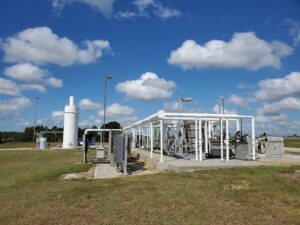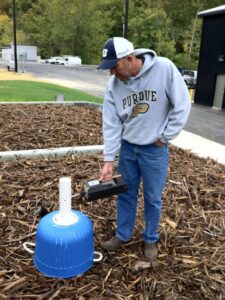Choosing the Right Biological Odor Control System for Your Facility
 Managing odors is an important part of operating an industrial or municipal facility. Uncontrolled odors can lead to complaints from the surrounding community and create compliance issues with environmental regulations. Biological odor control is an effective and natural way to reduce odors without relying on harsh chemicals. These systems use microorganisms to break down odor-causing compounds, making them a sustainable choice for many industries.
Managing odors is an important part of operating an industrial or municipal facility. Uncontrolled odors can lead to complaints from the surrounding community and create compliance issues with environmental regulations. Biological odor control is an effective and natural way to reduce odors without relying on harsh chemicals. These systems use microorganisms to break down odor-causing compounds, making them a sustainable choice for many industries.
At Webster Environmental Associates (WEA), we specialize in helping facilities choose the right biological odor control system. Our team works closely with clients to design systems that meet their specific needs and fit their budget.
Key Considerations for Selecting a Biological Odor Control System
Selecting the right odor control system depends on several factors. Each facility has different needs, and understanding these factors is essential for achieving effective results.
First, the size and type of the facility play a major role in system selection. Larger facilities may require more advanced systems to handle higher odor levels, while smaller operations might need simpler solutions. The layout of the facility also affects how the system is installed and operated.
Another key factor is the type of odor sources present. Facilities handling organic materials, such as wastewater treatment plants or composting sites, often produce strong odors that need continuous treatment. Identifying the specific odor compounds helps determine the best treatment approach.
Budget and operational goals are also important. Some systems have higher initial costs but lower maintenance expenses over time. It is important to balance the upfront investment with long-term operational efficiency. WEA helps facilities find cost-effective options that align with their goals.
Comparing Different Biological Odor Control Technologies
There are several biological odor control options available. Each system works differently, so selecting the right one depends on the facility’s needs and operating conditions.
Biofilters are a popular choice for facilities with steady odor emissions. These systems use natural media, such as wood chips or compost, to support microbial growth. As air passes through the media, microorganisms break down odor compounds into harmless byproducts. Biofilters are known for their low operating costs and minimal energy requirements. They are well-suited for applications where odors are consistent and relatively low in concentration.
Biotrickling scrubbers are designed for facilities with varying odor levels. These systems use synthetic media that provides a stable environment for microorganisms. Unlike biofilters, biotrickling scrubbers continuously recirculate a nutrient-rich solution to keep the media moist and active. This makes them ideal for handling higher concentrations of odorous compounds.
Combination systems integrate biofilters and biotrickling scrubbers to maximize performance. These systems can handle a wider range of odor sources and provide greater flexibility in treatment. Combining the strengths of both technologies can help facilities achieve better results while maintaining operational efficiency.
Challenges in Biological Odor Control Implementation
 While biological odor control systems are effective, their success depends on proper design, operation, and maintenance. Several challenges can arise during implementation.
While biological odor control systems are effective, their success depends on proper design, operation, and maintenance. Several challenges can arise during implementation.
Choosing the right media is crucial for long-term efficiency. Media that is too dense can restrict airflow, while media that is too loose may not provide enough surface area for microorganisms to thrive. Selecting the correct media type ensures consistent performance and reduces the need for frequent replacements.
Maintaining the right conditions for microorganisms is another challenge. Microbes need the right balance of moisture, oxygen, and nutrients to function properly. If conditions are not maintained, the system’s efficiency can decrease, leading to odor breakthrough.
Regular monitoring and system optimization are also important. Over time, biological systems may require adjustments to keep them running at peak performance. Routine inspections help identify potential issues early and prevent costly repairs. WEA offers ongoing support to help facilities maintain their systems effectively.
How WEA Helps Facilities Make the Right Choice
WEA has extensive experience in biological odor control and understands the unique needs of each facility. Our team conducts thorough evaluations to identify odor sources and determine the best treatment approach.
We work with clients to design systems that are reliable and cost-effective. Our goal is to create odor control solutions that provide long-term value and meet regulatory requirements. Whether a facility needs a biofilter, a biotrickling scrubber, or a combination system, we help clients make informed decisions.
In addition to system design, WEA provides ongoing maintenance support and training. We help facility staff understand how to operate and monitor their odor control systems to ensure continued success.
Get in Touch with Our Experts Today
Choosing the right biological odor control system is essential for managing emissions and maintaining compliance. With the right approach, facilities can achieve effective odor control while keeping costs manageable.
WEA offers expert guidance and customized services to help businesses find the best odor control system for their operations. Contact WEA today to learn more about our biological odor control services and how we can help improve air quality at your facility.
